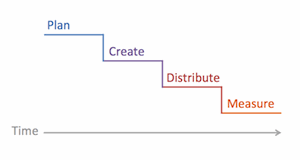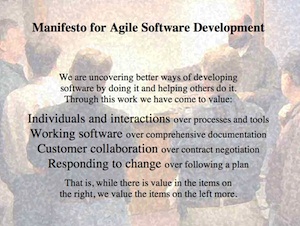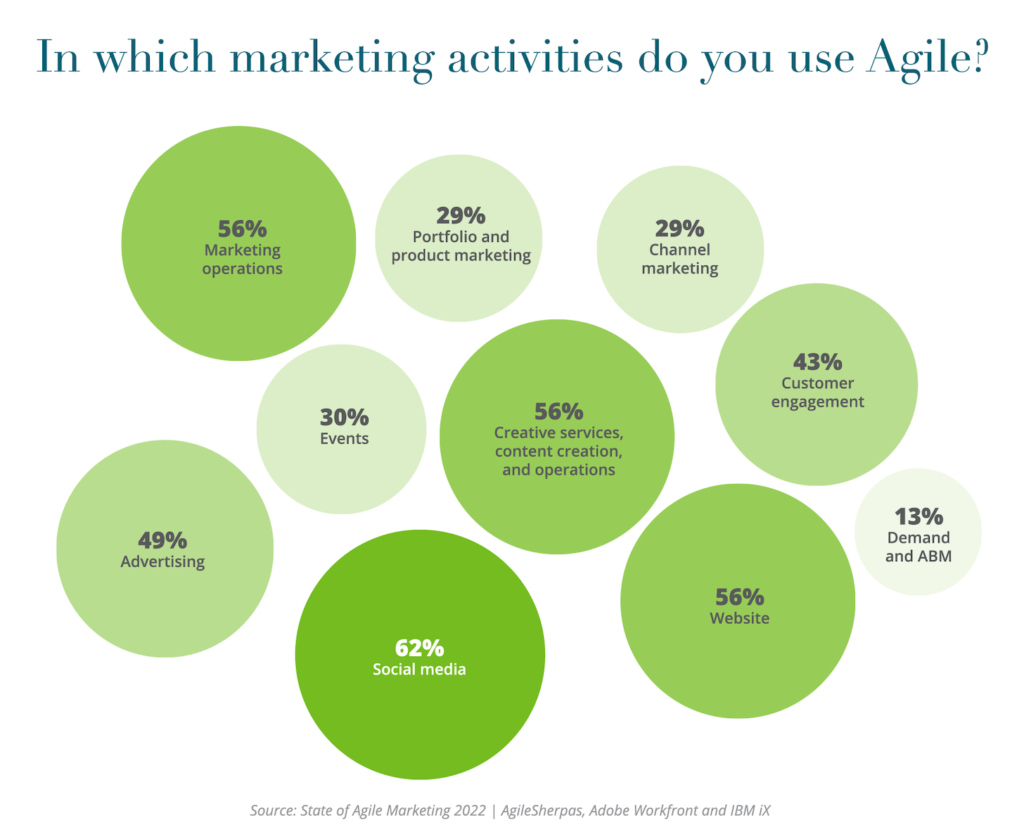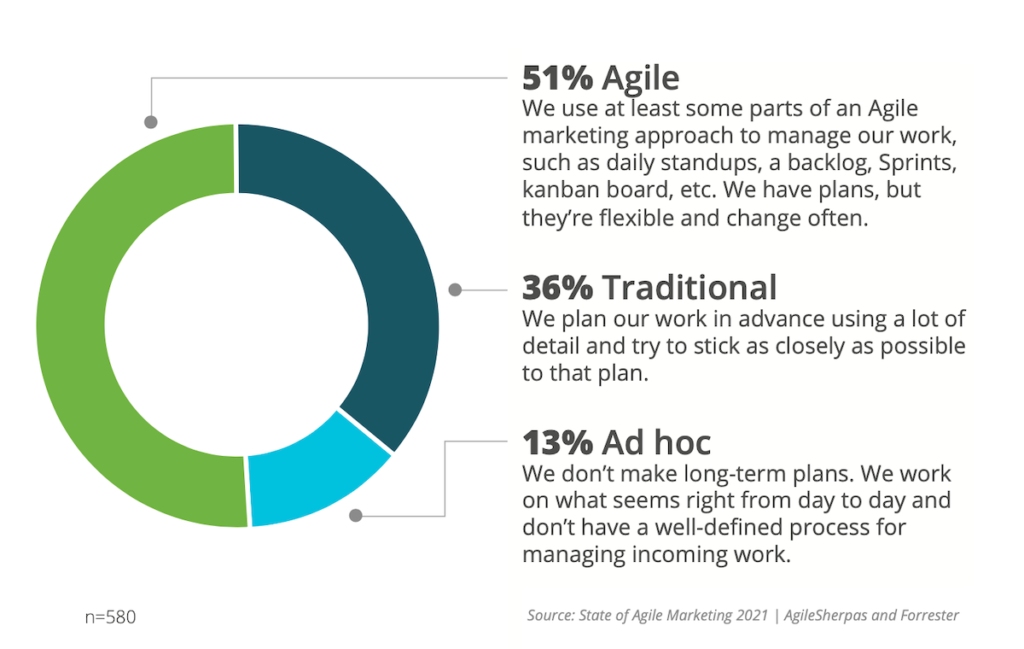Momentarily, I’ll be delivering the closing keynote at Agile Day hosted by Valtech in Paris, talking about customer experience, agile marketing, and marketing technology — and how they’re all entwined into the new competitive landscape of business. (Agile. Marketing technology. And Paris. I may have found paradise.)
Here is the slide deck from my presentation:
And here’s an essay version of my talk:
Agile Day 2012 Closing Keynote
Gartner recently predicted that by 2017, the CMO will spend more on IT than the CIO. As you might imagine, the reaction from many people in IT to that claim is, “What?!” Funny enough, the reaction from many people in marketing is the same: “What?!” It sounds like a prediction that the world we know will be completely turned upside down in 5 years. Can we believe that?
But the truth is, we’re seeing this happen already. At the Forrester CIO-CMO summit last year, I was in session where one CMO burst out in frustration, “I feel more like a CIO than a CMO! I have marketing automation, CRM, listening platforms — I’m up to my eyeballs in technology.”
Now, you might be asking yourself, “What does this have to do with agile?”
This convergence of marketing and technology is not a phenomenon of its own, so much as it is a symptom of our always-on, globally interconnected digital world. This new digital world didn’t happen overnight. It’s been the progress of the evolving Internet for the past 20 years. But it’s reached a tipping point where “online” no longer fits into a discrete box separate from our lives and our businesses. It’s now infused into the very bedrock of our lives and our businesses.
I believe this leads to two transformational mandates that every organization must face:
- Everything is marketing.
- Everyone must be agile.
These two mandates are intertwined. One begets the other in our interconnected world.
Let me clarify that by “agile,” I do mean little-a agile. Organizations and individuals must act and react with ever greater speed. We must be more prepared to adapt more quickly than ever before. That’s what I mean by everyone must be agile. But Big-A Agile methodologies help us achieve such agility, and to effectively scale agility, there must be method to the madness.
(Of course, we may need to adjust formal agile methodologies to work in new and different contexts. But we’ll get to that shortly.)
First, I want to convince you that essentially everything an organization does today impacts their marketing. And by “marketing,” I do mean little-m marketing. I’m not just talking about the Big-M Marketing Department.
I mean marketing the way that Peter Drucker meant it, when he famously said, “Business has only two basic functions: marketing and innovation.” Because the purpose of business is to create something of value — that’s innovation — and then to share it with the world and inspire customers to buy it — that’s marketing.
But let’s step back for a moment and look at how marketing has been conducted. Procter & Gamble, which is arguably one of the world’s best marketing companies, described a model of marketing that worked like this. Consumers became aware of a brand through some sort of stimulus, typically advertising. Hopefully multiple times, i.e., frequency. After absorbing these crafted stimuli for some time, consumers eventually found themselves at the store where they faced a choice: out of all the different brands on the shelf for a particular type of product, which one would they choose?
Procter & Gamble’s CEO A.G. Lafley called this “the first moment of truth” (FMOT). Does the consumer choose you, or a competitor? That’s when you find out just how effective your advertising was.
But that’s only the battle for the first purchase. When the customer gets the product home and actually uses it, that’s the second moment of truth (SMOT): do they like it? The first moment of truth wins or loses first-time buyers; the second moment of truth wins or loses repeat customers. However, it’s interesting to note that in this model that different consumers were largely isolated from each other, except for immediate word-of-mouth of friends and family or business colleagues.
There’s also something else we can observe about this approach to marketing. It’s highly structured. Major advertising campaigns, as well as other kinds of marketing initiatives, followed a staged process. First, campaigns would be researched and planned. Then a creative team would produce the ads. Then the media buyers would place them. Then after all that, ratings, surveys, and correlated sales could be used to measure — albeit, often in a fuzzy fashion — how effective the whole thing was. This cycle would typically take months from beginning to end.
To practitioners of agile management though, this shape looks quite familiar: it’s the waterfall. And as with software and other projects following a waterfall management pattern, it suffers from inflexibility and a lack of good mechanisms for adapting to mid-stream feedback.
But what possible mid-stream feedback could there be in marketing?
Welcome to the new model of marketing, which is dominated by something Google has coined the zero moment of truth (ZMOT). The zero moment of truth has inserted itself before the first moment of truth. Now, when a consumer is exposed to a stimulus that piques their interest, they go online and check it out. They visit your web site, they read reviews, they check out your competitors, they Google, they check in with social networks on Facebook, Twitter, LinkedIn. A prospective customer can pretty much get all the information about you, good and bad, anytime they want.
There are some pretty amazing — or, as some might say, terrifying — things happening here:
- The customer is in control of their ZMOT experience
- You won’t even know all of the different sources they use
- They can jump from one source to another at the speed of a click
- The far majority of content in the ZMOT is not produced by you
- Often the majority of ZMOT content comes from other customers
- The ZMOT can clinch or sabotage the FMOT before the prospect ever enters the store
- The environment of the ZMOT is constantly in flux, changing every minute
And if a prospect makes it through the ZMOT and the FMOT and actually becomes a customer, then you’ve got a lot more riding on their second moment of truth than just their repeat business now. Because they can instantly contribute to other prospective customers’ ZMOTs. (Respect well the mommy blogger!)
Forrester has visualized this new state of marketing as iterative circles of cross-touchpoint customer experiences. Prospects discover your product or category, they search, research, compare. They may do this on your web site, the open web, using mobile devices, stopping in at a physical store, calling your call center, tapping social networks — or any combination of those channels. Upon purchase, they then use the product, seek help, share their experience with others — again intermingling among these different channels. As they become loyal, repeat customers, they may even start to evangelize and promote your brand for you.
To an agile practitioner, if you squint your eyes, this highly interactive and iterative process almost looks a little like something we know: the iterative loops of agile sprints, building momentum one step at a time in an open and collaborative fashion.
I want to interject: although the above examples are drawn from consumer marketing, these same phenomena are happening in B2B marketing as well. As Jonathan Becher, CMO of SAP, recently said at a conference, “Big, large, glass buildings do not buy software. People do.” Every business buyer and influencer can tap into the ZMOT too. (See Godin’s hierarchy of business-to-business needs.)
In short, our customers are now agile. Little-a agile, but nimble and adaptive in the digital world. And that’s a problem for a lot of organizations because the traditional model of marketing is not.
This collision of fast-moving customers and slow-moving marketing management has been the subject of many popular books over the past couple of years, advocating for change. One of my favorites is Real-Time Marketing & PR by David Meerman Scott. At least at a tactical level, it’s starting to sink in. We’re seeing more and more companies proactively embrace social media as a two-way conduit with their customers, such as with Dell’s Social Media Listening Command Center.
But rather than focus on social media tactics, I’d like to look at this transformation through a different lens. When you think about the ZMOT, the iterative circles of cross-channel customer experiences, and the emerging concepts of social business, we can characterize its essence this way:
- Individuals and interactions — every touchpoint is an opportunity to shine or to fumble
- Responding to change — our marketing tactics must adapt to real-time feedback and opportunities
- Customer collaboration — our best customers can be our evangelists and partners in development
- Working “experiences” — consistently meeting customer expectations matters more than ever
This overlays almost perfectly with the pillars of the Manifesto for Agile Software Development. This is surprising — until you think about it and realize that many of the same dynamics that inspired that manifesto in software are now present in the new world of marketing.
This new kind of marketing is about more than advertising, PR, communications, etc. It’s about end-to-end customer experiences in an agile world. It’s more strategic than tactical. And it’s why everything that impacts that end-to-end customer experience is now a part of little-m marketing.
As Seth Godin says — and David Packard of Hewlett-Packard before him: “Marketing is too important to be left to the marketing department.”
In fact, to achieve this agility with customer experiences, we need to embrace agile principles more broadly throughout the entire organization. The dynamics of interconnectivity in the digital domain have the power to transform management practices inside a company as well, as Charlene Li’s groundbreaking book on Open Leadership describes. This is why consumerization of IT is thriving. Employees are harnessing their devices, their social networks, their software tools of choice to achieve success.
While this certainly presents challenges for the IT department, the potential benefits are immense. Digitally empowered employees are more connected to their organizations, more involved, and better able to contribute and collaborate. This new kind of engaged enterprise inspires:
- More participation
- More responsiveness
- More independence
- More transparency
All powerful values in our new world — and by no small coincidence, the very spirit of agile methodologies.
Let’s examine the enabling technology behind this more closely. In this new environment, technology is more than infrastructure — it is business capabilities.
For example, let’s consider the technologies that are changing the marketing department. There’s kind of a perfect storm of factors inspiring new marketing technology today. The shift of billions of dollars in marketing spend. Cloud computing and open source platforms making software development easier and cheaper. The trackable nature of digital marketing to justify ROI. The greenfield opportunity that disruptive innovation presents.
All of these factors have combined to inspire an explosion in marketing technology products — hundreds, thousands of solutions across dozens of categories, from start-ups and giant enterprises alike. Social media management. Search engine optimization. Bid management. Web analytics. Landing page optimization. Marketing automation. Email marketing.
We’re basking in a Golden Age of Marketing Software.
Marketers never had so much technological power laid before their feet. But it’s important to realize that this software is more than just a collection of tools. To a very real degree, software is marketing’s eyes, ears, and hands in the digital world:
- Our choice of analytics software will shape our perceptions of our customers
- Our choice of automation software will guide the digital processes we define
- Our choice of optimization software will teach us different marketing tactics
- Our choice of CRM software will structure our view of customer relationships
Most of all, software will determine the kinds of customer experiences we are able to provide.
Interestingly, if you look at the configuration of marketing software used to deliver these customer experiences, it looks a lot like programming. If the customer does this, then do that, unless this is a repeat customer, in which case do this other thing. It’s programming marketing.
This brings us to agile from the other direction, because programming projects are where agile was born and raised.
We can now step back and recognize three waves of agile transformation in marketing. The first wave, the foundation, was the proliferation of the digital channels that are inherently agile. The second wave is this blossoming of new marketing technology that has the potential to scale agile marketing execution in that environment. But the third wave, on which this all hinges, is the ability for organizations to manage this new marketing agilely.
And, remember this isn’t just the marketing department. This disruptive innovation spans sales, operations, customer service, HR. And ultimately all of these departments, directly or indirectly, contribute to the customer experience. This is why everyone in the organization must become agile.
How might agile practices evolve in these new contexts?
Well, looking at the original manifesto for agile software development, it’s clear that we need to adapt a few things — hey, that’s what agile is all about. For instance, “working software” isn’t necessarily the primary goal in other enterprise functions.
So to conclude this Agile Day, I’d like to stir your imagination with what an agile marketing manifesto might look like. A couple of the values from the original manifesto clearly port into marketing verbatim:
- Individuals and actions over processes and tools.
- Responding to change over following a plan.
As they say, there is value in the items on the right, but we value the items on the left more. Building on those two pillars, I’d propose three more values specifically for agile marketing:
- Remarkable customer experiences over rigid customer management.
Although there is value for optimizing customer management processes for efficiency — policies and procedures for handling common customer situations — there is more value in delivering remarkable customer experiences. (And I mean remarkably good, not remarkably bad!) Agile marketing is concerned with the experience of individual customers and is ready to dynamically adapt the rules accordingly. Policies are not excuses in the eyes of the customer.
The iterative loops of cross-touchpoint customer experiences — which leverage and contribute to the crucial ZMOT — are modern marketing’s most important responsibility. So let’s raise it as a core value. If something is hindering, not helping, achieve remarkable customer experiences, let’s be fearless in fixing it — for that customer and for others.
- Testing and data over opinions and conventions.
Marketing has a colorful legacy of being driven by strong gut-level opinions and belief systems that harden into institutional conventions. There is some value in that legacy, of visionary insights and organizational traditions, but marketing technology has given us a far better option for many marketing initiatives.
We can test — A/B testing and multivariate testing — and we can measure. For instance, instead of debating whether a male or female model will work best on a landing page, we can try both in an A/B test, and see which works best. Tests can be as tiny as such a choice of imagery on a web page or as big as pricing models and messaging around your core value proposition.
Using data to drive customer insights and test hypotheses for customer experiences is what web analytics 2.0 is all about. It’s not about reports or pretty charts. It’s about using data as the voice of the customer. I highly recommend Avinash Kaushik‘s book — if for no other reason, it will teach you how to handle the dangerous HiPPO (the highest paid person’s opinion) in a productive fashion.
- Numerous small experiments over a few large bets.
In the old world of marketing, we were often forced to make big bets on those gut instincts. Commit millions of dollars to an advertising campaign before it airs even once. While there is still value in some big bets, a much more valuable marketing capability is the ability to engage in many small experiments, rapidly and iteratively. Testing and data enables this, but we must develop a propensity for experimentation in order to scale that value.
As the Nobel prize-winning scientist Linus Pauling once quipped, “The best way to have a good idea is to have a lot of ideas.” Try lots of small experiments, quickly throw out the ones that fail, quickly scale up the ones that succeed. And when you have an incredibly successful outlier, scale that as a big bet.
From these core values, we can — and should — certainly extrapolate a broader set of agile marketing principles, along the lines of the Declaration of Interdependence from Alistair Cockburn and Jim Highsmith for agile project management. For now, we’ll leave that as an exercise for the reader.
Of course, given those values and principles, we still must forge the methodologies for implementing agile marketing in our organizations — the actual real work of making this happen. As with agile software development, there will no doubt be more than one agile methodology that works. We can take inspiration from Scrum and Lean. The right one for you will depend a lot on your company, your culture, and your customers.
But one place to start is to check out Valtech’s new white paper on Agile Marketing.
In closing, I’d like to leave you with one more quote from Jonathan Becher. “The first thing you should do is think about culture — because culture eats strategy for lunch (and breakfast, and dinner).
Agile is, more than anything, a cultural shift. We’ve seen the incredible impact it’s had on modern software development over the past 10 years. Now it’s time to take that revolution to the broader enterprise. Agile needs champions to bring these values, principles, and methodologies beyond the project and into the fundamental fabric of the business. Will you be that champion?
Because now everything is marketing, and everyone must be agile.






Wow. Wish I had the opportunity to hear you share this in person, awesome awesome perspective here Scott. Thanks for sharing this!
Thanks, Eric!
Excellent post. Wish I could have seen the presentation. Couldn’t agree more with the sentiments and the predictions. Seeing the transformation of marketing occurring every day–often with lots of resistance.
This is an awesome post. Thanks for sharing and especially the Essay. Slides+Essay= Powerful information for the ones not attending. I wish I was there while you presented this.
Great article. My company helps organizations transform to Agile so I too have infused concepts of Agile into my marketing strategy. I appreciate you bridging the two finally in a way that makes sense. Traditional marketing is dead!
We found that in our environment the type of predictability to plan with certainty was low so we were forced to go Agile as we were in a very reactive mode all the time. We found Scrum-ban to be a great way to prioritize our workflow. We use the framework of Scrum but use a Kanban board to prioritize our tasks.
It’s brought an extreme amount of transparency to our organization and allows us to celebrate our wins together.
I hardly leave a comment, but this article is definitely worth is. Thanks, great piece of value added to the WWW 🙂
Pingback: Why Agile Marketing should become every marketer’s priority